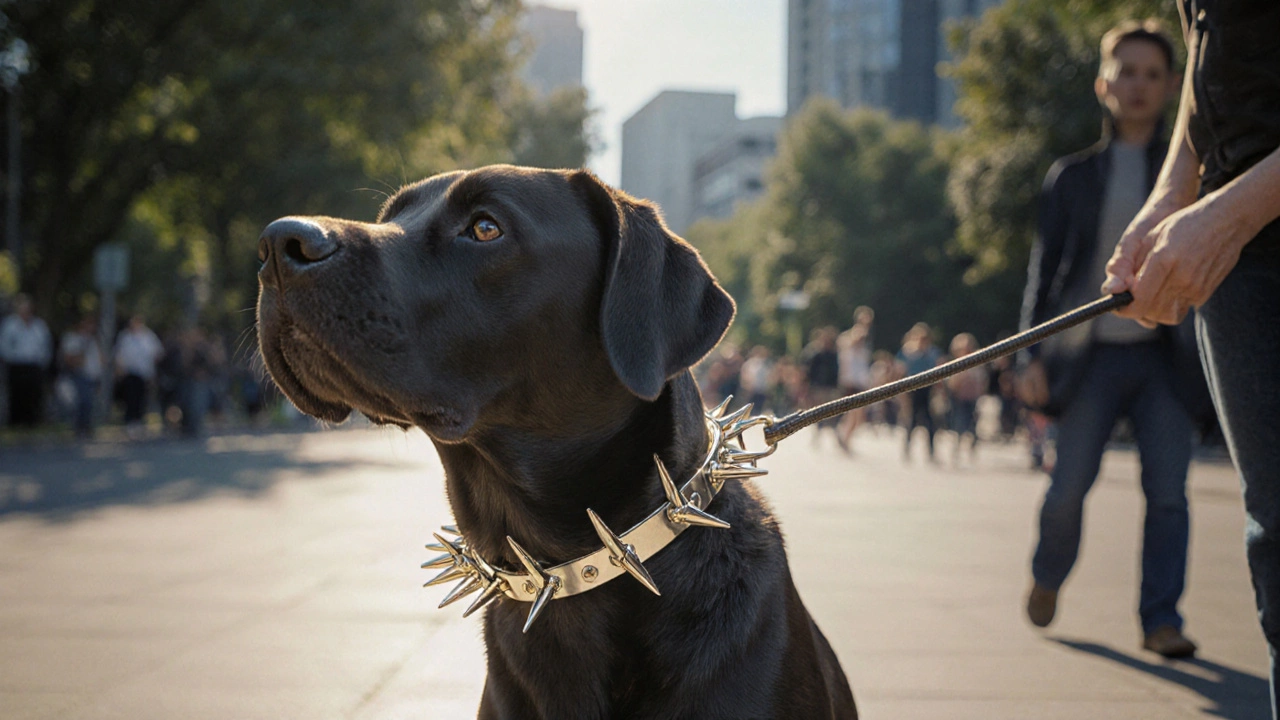Prong Collars – How They Work, When to Use, and Safety Tips
When talking about Prong Collars, a strap with metal spikes that delivers a quick pressure cue when a dog pulls on the leash. Also known as pinch collars, it offers a firm but brief correction to help dogs learn loose‑leash walking. Dog Training, the practice of teaching obedience, recall, and proper leash behavior often sparks debate about whether a prong collar is the right tool. The conversation usually brings in Harnesses, front‑clip or back‑clip devices that distribute pressure across the chest instead of the neck as a gentler alternative. Finally, many owners consult Veterinary Guidance, professional advice on health risks and proper fitting before deciding.
First off, a prong collar isn’t a toy. The spikes are usually made of stainless steel or aluminized alloy, designed to pinch the skin rather than cut. When the dog pulls, the collar tightens just enough to remind them to stop without choking. This quick feedback can be effective for strong pullers, especially large breeds that outgrow regular flat collars. However, the same pressure that stops pulling can also cause neck bruising if the collar is too tight or used on a dog with a delicate throat. That’s why measuring the dog’s neck girth accurately and leaving a two‑finger space between the collar and skin is non‑negotiable.
Key Considerations Before You Buy
Think about your dog’s temperament and training history. If your pup is a seasoned puller who’s resisted flat‑collar training, a well‑fitted prong collar used under professional supervision might be worth a trial. But if your dog is young, has a history of neck injuries, or you’re new to leash training, start with a prong collars alternative like a no‑pull harness or a head‑halting collar. Remember, any correction tool works best when paired with positive reinforcement: praise, treats, and clear commands when the dog walks beside you. Also, check airline policies if you travel; many carriers list specific regulations for metal‑spiked collars, and a plain flat collar or harness can save you a hassle at the airport.
Maintenance matters, too. After each walk, wipe the spikes with a damp cloth to remove sweat and debris, then check for rust or broken prongs. Replace the collar immediately if you notice sharp edges or loose fittings. Some owners keep a spare collar for grooming days or vet visits, where a softer option is safer. And always store the collar in a dry place to prevent corrosion. Regular checks keep the tool effective and protect your dog’s skin.
Bottom line: prong collars can be a useful part of a broader training toolbox, but they’re not a one‑size‑fits‑all solution. Use them responsibly, combine them with positive training techniques, and lean on professional advice when unsure. Below you’ll find articles that break down travel tips, feeding schedules, and health considerations—helping you decide when a prong collar makes sense and when a harness or a different method is the smarter choice.
Posted By Bryndle Redding On 14 Oct 2025 Comments (0)
Why Do People Hate Prong Collars? Understanding the Controversy Behind This Dog Training Tool
Explore why prong collars spark strong criticism, the health risks they pose, legal bans, and humane alternatives for better dog training.
READ MORE